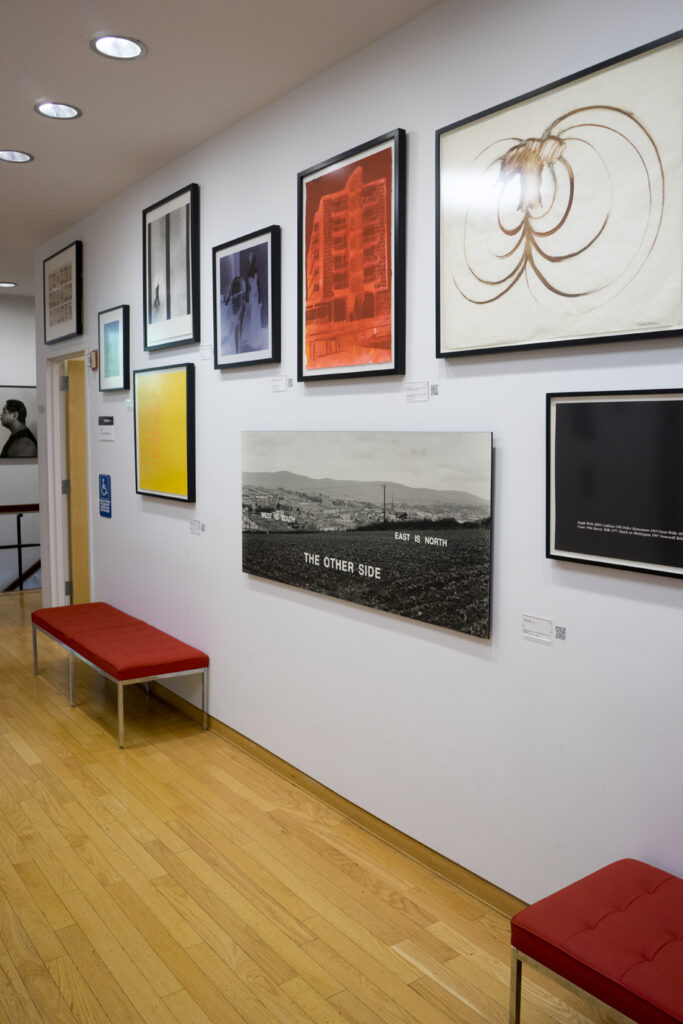
The art collection here at The New School is striking. As I’ve engaged with it, I’ve wondered about the circumstances, context, and criteria for purchase. I know that several pieces, such as the Orozco murals have been contentious and others, like the Kara Walker installation in Arnhold Hall, are profoundly provocative, reflecting an intentional political stance. I also wonder, therefore, what the presuppositions are about how we engage with such work in our hallways. Our website states that The New School Art Collection ‘is a resource where issues and ideas relevant to our times are explored in a creative and engaged fashion…’ and is intended to ‘offer a context of the collections relevance to the wider discussions taking place within The New School community’.
My first contact with the Collection was curiously personal. I saw Willie Doherty’s The Other Side and felt a connection to the desolate landscape. As I drew closer I was surprised to see that it was about the Irish Conflict; after all I had lived through that in England as a child and teenager. This was a “Civil Rights” conflict known as the ‘Troubles’ between the British armed forces and paramilitary networks, including the Irish Republican Army (IRA). Immediately in front of that was the piece from Peter Gee, an artist born in Leicestershire, only thirty minutes from where I’m from, but who worked extensively in New York. His piece was entitled Freedom, Equality and Martin Luther King Jr., Martin Luther King Portfolio, 1968. It is a text based graphic piece of repeated words, Freedom, Equality, Righteousness, Tranquility, Independence, Brotherhood, and Civil Rights. My final selection was Erika Rothenberg’s Greetings which seems to satirize America’s approach to immigrant arrivals and their desire for freedom. The Collection has a kind of boldness and intentionality.
As someone who is still an outsider to the U.S., I see unspeakable things happening in terms of race that leave me shocked and saddened— in many ways, the plantocracy remains alive and in some ways unchallenged in the USA. Racism, whether framed as unintentional or unintended, is jarring. And yet, I find that it was here at The New School that Martin Luther King spoke on February 6, 1964, at the “American Race Crisis” lectures. What is the relationship of that institution to us now—who were we then and are we the same now?
What do ‘Freedom’ and ‘Integrity’ mean for us at an institutional and individual level?
What do we leave unsaid? What fears still remain in these walls that cause things to be left unsaid?
What is the relationship of the politically powerful ideas embedded in the works in the Collection to the ways in which our everyday business is conducted in this institution?
Yvonne Watson
Faculty, Parsons The New School for Design

